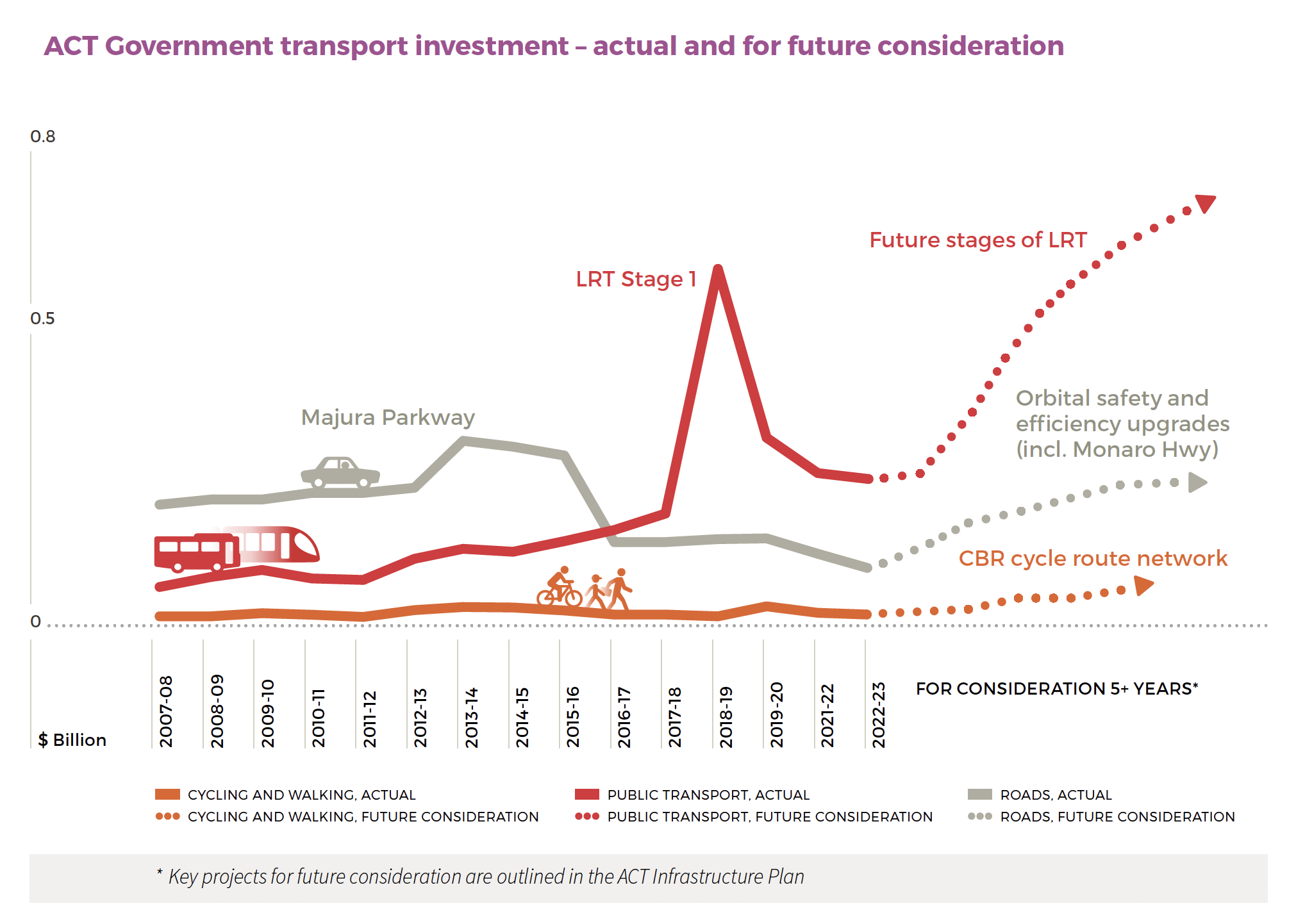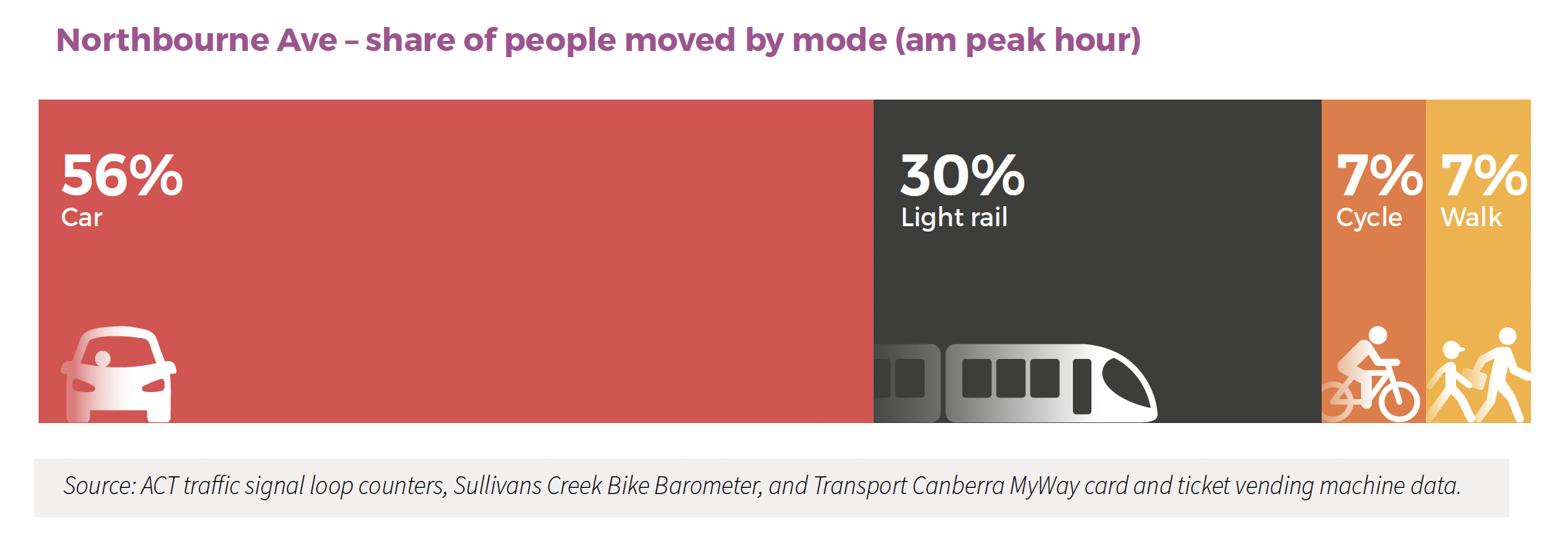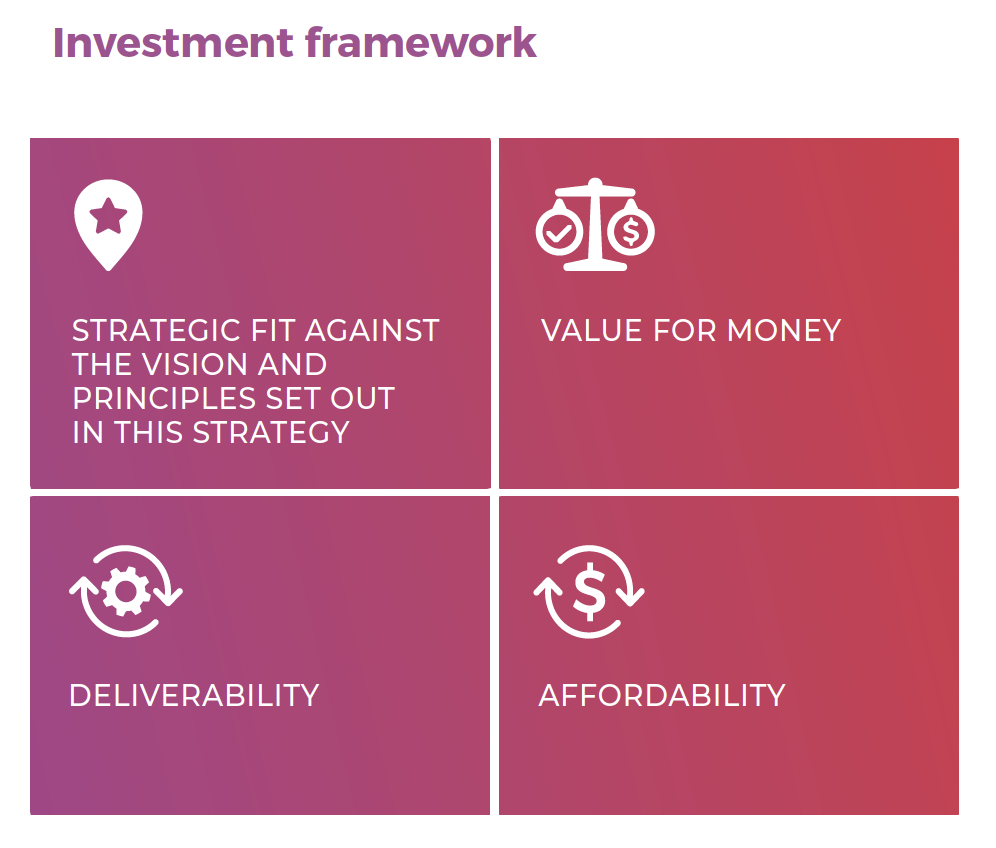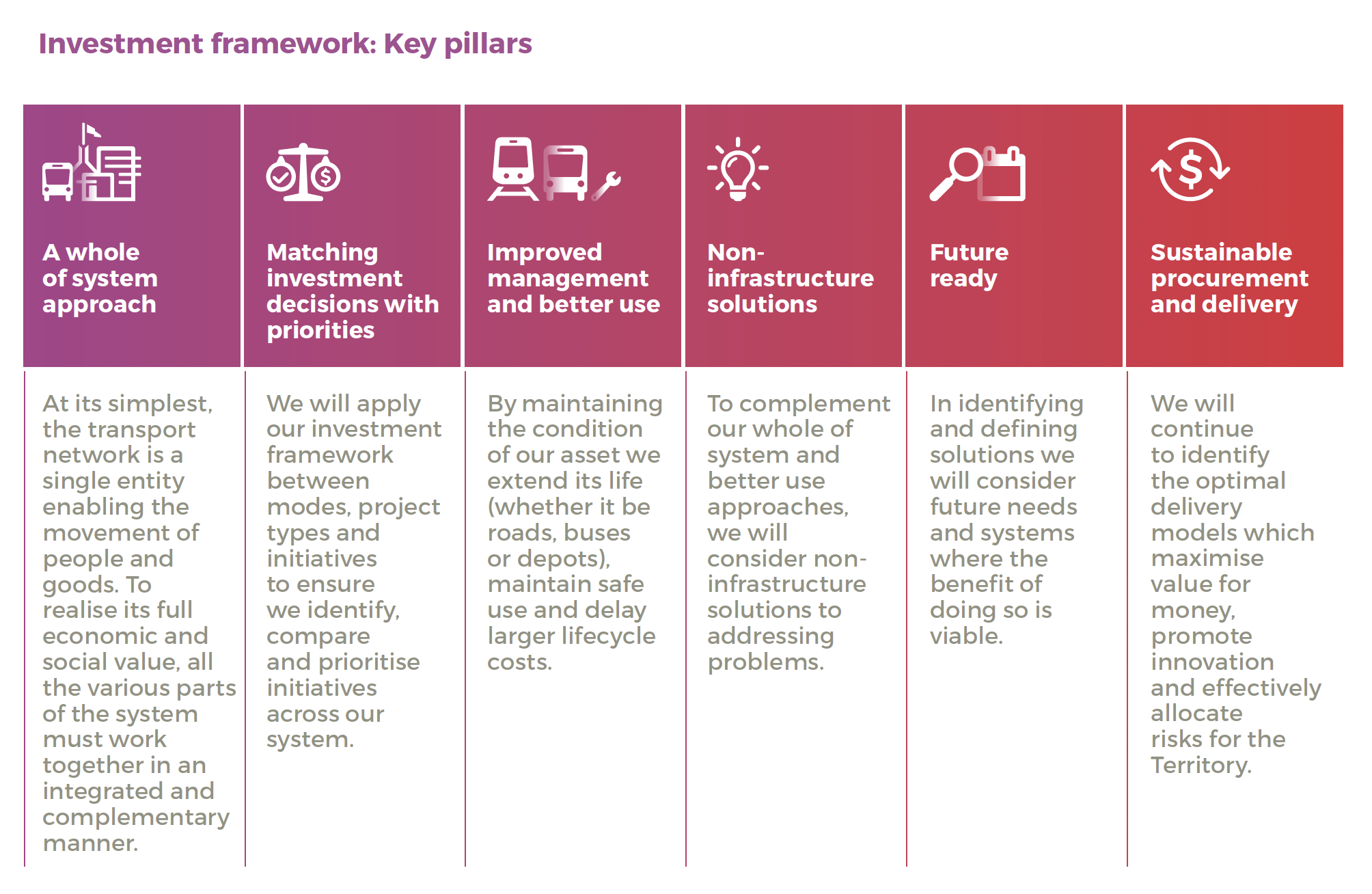Future-focused investment
A future-focused investment framework supports long-term sustainable benefits. We will consider the sustainability of a solution and look to its impact not just for the immediate transport solution, but its broader contribution to the liveability of the city. Practically this will involve the continued rebalancing of investment towards public transport, cycling and walking while we will continue to invest in the safety and maintenance of our road network to ensure safe and accessible choice which will support the future growth of Canberra.
The current transport appraisal and planning processes in use by many governments tend to promote delaying infrastructure investment until issues reach a critical point.
In particular, the cost-benefit analysis undertaken for infrastructure projects often favours addressing current problems rather than securing future benefits. Perversely the same cost-benefit analysis might suggest that a project delayed by 10 years provides a better return on investment even though the costs of delivering the project will have increased significantly. This is because the immediate problems associated with not having the infrastructure are easier to quantify than the future benefits gained, particularly for public transport infrastructure which has such a diverse range of indirect benefits.
We cannot and should not leave public transport investment until traffic delays reach unacceptable levels and impose high social, environmental and economic costs. Where a project is necessary either now or in the future, bringing forward the social and financial benefit can often be the best choice. This ethos has been evident throughout Canberra’s history and it is one of the key reasons the city’s infrastructure supports our excellent quality of life so well.
In its decision making the ACT Government will explore all the benefits of transport initiatives, beyond the purely financial, to ensure that we continue to meet our ambition of a compact, efficient and exceptionally liveable city.
Rebalancing our investment
In recent years, the ACT Government has recognised the urgent imperative to rebalance investment towards public transport, cycling and walking, taking a future focused approach to building Canberra’s transport network and mitigating potential congestion. As the following graphic demonstrates, transport investment is increasing significantly, and we are starting to see a more holistic approach to investing in all modes. With developments outlined in the ACT Infrastructure Plan, this is planned to continue.

Light Rail Case Study
A future-focused investment
The introduction of light rail in Canberra, the largest single public investment made by the Territory since self government, demonstrates the benefits of prioritising future focused infrastructure investments.
This project was proactively implemented to meet the anticipated transport need of future development along Northbourne Avenue and in the Gungahlin region. Rather than waiting for the traffic delays to reach unacceptable levels, the project future proofed the corridor against long- term congestion issues.
The National Infrastructure Plan, which was released by Infrastructure Australia in July 2013, recognised the Gungahlin to Civic Transport Corridor as an early stage initiative for the 2013 Infrastructure Priority List but referenced transit bus lanes instead of light rail. The ACT Government recognised the short-term congestion problems the project was measured against were outweighed by the long-term benefits and opportunities the project offered. As a result, the ACT Government proceeded independently of Federal funding.
Subsequently, in February 2016 Infrastructure Australia recognised the Civic to Gungahlin Light Rail project as a national priority. At this point the ACT Government had already been working on the project for several years and had just selected Canberra Metro Consortium as the preferred tenderer.
Transforming our city
The light rail project was delivered as an urban transformation project rather than an isolated transport solution. A subsequent benefit realised was accelerated urban renewal along the alignment, particularly along Northbourne Avenue. From November 2016 to March 2019, the value of development approvals granted along Northbourne Avenue exceeded $394m.
While Northbourne Avenue is becoming a more liveable and vibrant place to live, play and do business, it has also become more efficient and is able to carry more people than ever before. While light rail carries around 30% of people along the corridor during the AM peak, these people are carried by less than 20 light rail vehicles, in a highly space efficient way.
Since operations commenced in April 2019 and COVID-19, the average light rail patronage has exceeded the Light Rail Business Case patronage projections forecasted for 2021.
Light Rail Stage 2
Building on the success of Light Rail Stage 1, the ACT Government is now progressing with the second stage of building light rail to Woden. Connecting light rail to Woden is occurring in two stages – City to Commonwealth Park (Stage 2A) and Commonwealth Park to Woden (Stage 2B). With the business case for Stage 2A endorsed, work has commenced on extending light rail to Commonwealth Park. This 1.7km extension, due to commence operations in 2024, will see three new stops added to the network and will help move an extra 3,000 passengers daily within the first year of operations. Stage 2 of light rail to Woden is expected to be operational around the mid-2020s.
As with Northbourne Avenue, Light Rail Stage 2 will be a catalyst for the transformation and revitalisation of Adelaide Avenue. This will include a coordinated approach to transport and land use planning. The corridor will evolve on a precinct by precinct basis in tandem with light rail stops. Precincts will reflect the unique characteristics of the surrounding neighbourhoods. Strong connections of these places to the light rail will be a key principle of success. This will result in better places and an enhanced look, feel and function for the corridor.
A balanced and strategic investment framework
We will need to make smart, targeted investment decisions to ensure we achieve the future course set out by this strategy. This will involve adopting a balanced and strategic investment framework in line with this strategy’s vision and future transport needs. Our aim is to invest in a way that maximises the benefits for the community. To achieve this, we will use an investment framework to identify, assess, and prioritise initiatives.


Investment framework
A key part of this approach is to introduce a strategic merit test alongside the traditional economic appraisal to ensure that investment is integrated with planning and transport strategic directions.
We aim to create a transport system that is innovative and future ready. In identifying and defining solutions we will do so in a way that considers future needs and systems where the benefit of doing so is viable.
To continue to maintain and enhance community outcomes we will seek to manage funding requirements through better use and non-infrastructure initiatives, and we will also continue to use innovative delivery models where these present value for money.
As we move toward more infill development and as our urban infrastructure reaches the end of its useful life, we will explore more innovative ways to seek contributions from those who stand to benefit, to support transport funding. We will also consider broader program-based funding to target funding particularly in managing existing assets.
While we will determine investments on a case by case basis, our approach will be guided by the following investment principles.





